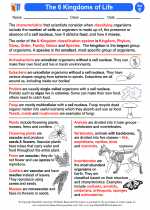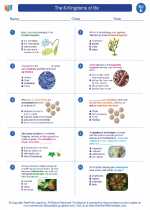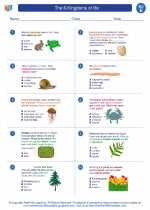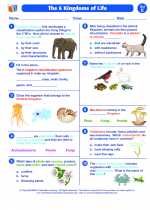Synapses
A synapse is a specialized junction between two neurons or between a neuron and a target cell, where electrical or chemical signals are transmitted. These signals allow neurons to communicate with each other and are crucial for proper functioning of the nervous system.
Types of Synapses
There are two main types of synapses:
- Chemical Synapses: These are the most common type of synapses. They involve the release of neurotransmitters from the presynaptic neuron into the synaptic cleft, which then bind to receptors on the postsynaptic neuron, leading to the transmission of the signal.
- Electrical Synapses: In these synapses, the electrical signal is passed directly from one neuron to another through gap junctions, allowing for rapid communication between the cells.
Function of Synapses
Synapses play a crucial role in information processing and transmission within the nervous system. They allow for the integration of multiple signals from different neurons, as well as the modulation of signal strength and direction. This enables complex functions such as learning, memory, and coordination of movement.
Structure of a Synapse
A typical chemical synapse consists of the following components:
- Presynaptic Terminal: The end of the axon of the presynaptic neuron, where neurotransmitters are stored and released.
- Synaptic Cleft: The small gap between the presynaptic and postsynaptic neurons where neurotransmitters are released.
- Postsynaptic Membrane: The membrane of the postsynaptic neuron that contains receptors for neurotransmitters.
- Neurotransmitters: Chemical messengers released from the presynaptic neuron that bind to receptors on the postsynaptic neuron, initiating a response.
Study Guide
Here are some key points to remember about synapses:
- What is a synapse and what is its function?
- What are the two main types of synapses and how do they differ?
- Describe the structure of a chemical synapse and the role of neurotransmitters.
- Explain the significance of synapses in information processing and nervous system function.
Understanding the concept of synapses is essential for grasping the functioning of the nervous system and how neurons communicate with each other. Remember to review the structure, function, and types of synapses to ensure a solid understanding of this topic.
Good luck with your studies!
.◂Science Worksheets and Study Guides Fifth Grade. The 6-Kingdoms of life

 Activity Lesson
Activity Lesson
 Worksheet/Answer key
Worksheet/Answer key
 Worksheet/Answer key
Worksheet/Answer key
 Worksheet/Answer key
Worksheet/Answer key
 Worksheet/Answer key
Worksheet/Answer key
 Vocabulary/Answer key
Vocabulary/Answer key
 Vocabulary/Answer key
Vocabulary/Answer key
 Vocabulary/Answer key
Vocabulary/Answer key
 Vocabulary/Answer key
Vocabulary/Answer key
